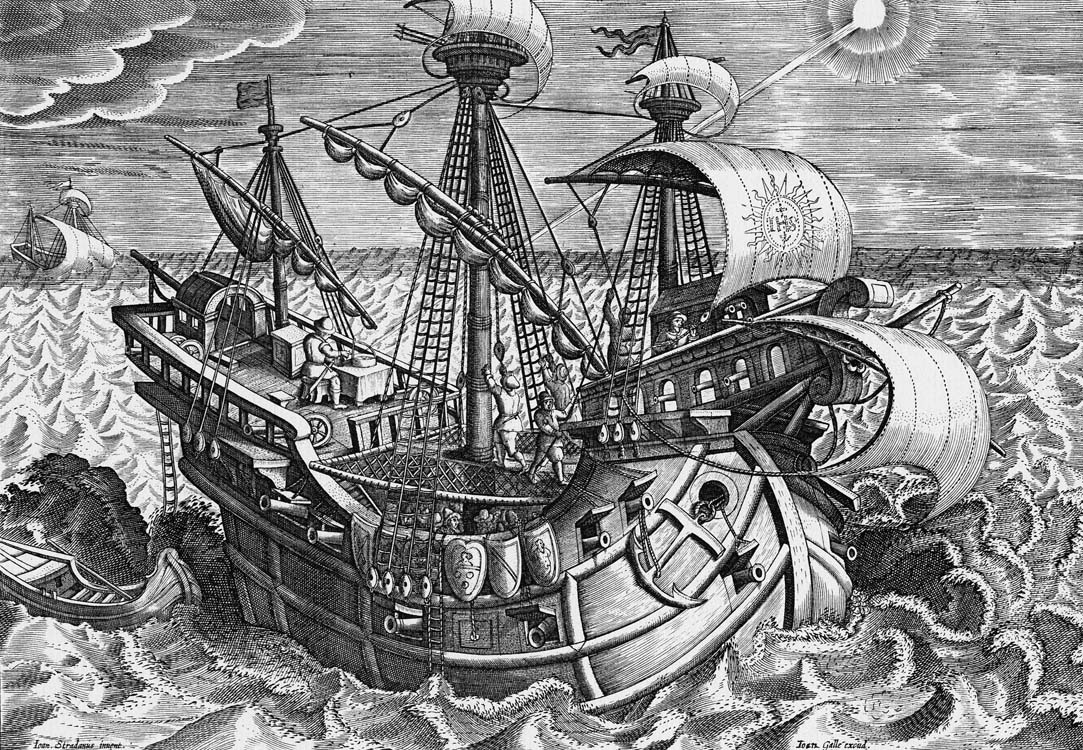
Together with the caravel, the carrack was the vessel that allowed the first ocean voyages of the Age of Exploration. Its wide hull ensured easier sailing on the open sea and, most important, made it possible to carry heavy loads of cargo. However, it was slower than the caravel. Its design featured an aftercastle, a forecastle, a mainmast rigged with square sails, a mizzenmast with lateen (triangular) sails, a foremast, and a bowsprit. The most famous carrack is Juan de la Cosa’s Santa María, used by Christopher Columbus as the flagship for his first expedition. His other two ships, the Pinta and Niña, were caravels. Also known as La Gallega (because it was built in Galicia), the Santa María was 27 meters long, and fitted with cannons on the lower deck and small cannons on the poop deck. The captain’s cabin was located in the aftercastle, which also housed the helmsman’s protected quarters. The glorious history of the Santa María ended at mid-point in the voyage, on December 25, 1492, when it ran aground on the coral reef of Haiti and had to be abandoned. (Giovanni Stradano, Nova Reperta - Longitudini terrestri trovate con la declinazione del magnete dal polo, Antwerp, 1587/1589)




